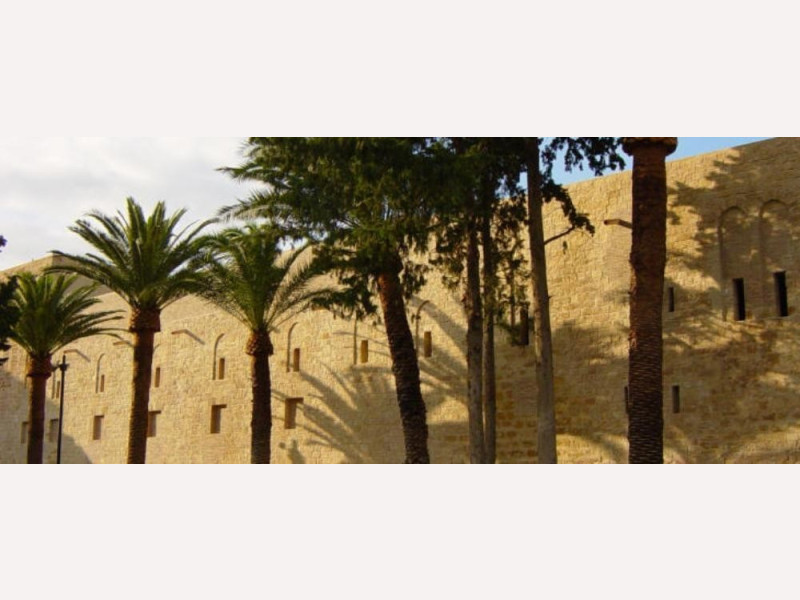Castello della Favara a Maredolce
Favara or Maredolce, born probably in the Arab period between 998 and 1019, during the rule of the Emir kalbit "Ja'Far II" as a suburban home. By Roger II, the castle underwent an extensive intervention of transformation and expansion, making it one of the "sunny places" of delight of the Norman kings. To the first Norman king of Sicily is also attributed the creation of the beautiful fishpond called with the Arabic word "Albehira", which was fed by a copious source at the foot of the Mount (the source of Fawwarah) and from it was channeled. The original building in fact, as can still be seen, was surrounded on three sides by water of a reservoir that for its large size was called "Maredolce", in which they were entered, from different regions, a variety of fish species, as we know from contemporary chronicles. The lake was navigated by the king and his court to satisfy their moments of pleasure, and it was also used as a fishing reserve because of the large amount of fish. The palace has a rectangular shape with a recess in the east, which breaks the linear trend. The fronts are divided by a series of arches "a rincasso", some of which are found as a result of restoration work, with windows arranged freely as the Islamic derivation. The Chapel of Favara, perhaps placed on the same site of the original private mosque of the Emir, takes the traditional themes of the churches of Byzantine architecture. Is, in fact, a type of plant with a single nave, and has its apse facing to the east, in the tradition of the Church of Byzantium. Outside the palace many historians cite the presence of a thermal complex, this confirms that the ancient "Portae Thermarum" (Porta Termini), had taken the name, not for the city of Termini, but for the baths of Maredolce, few miles away from the city.

